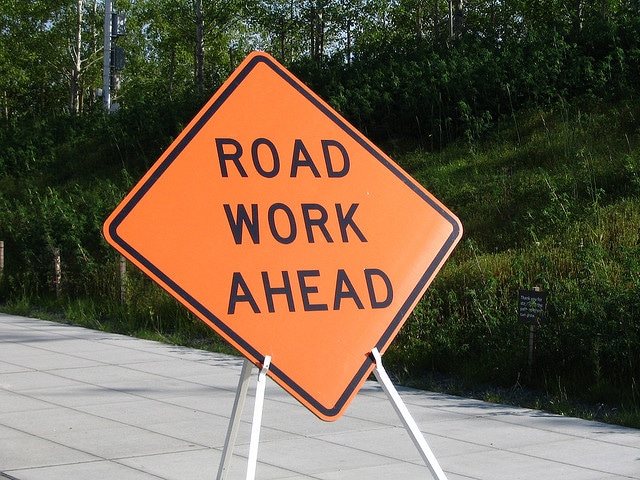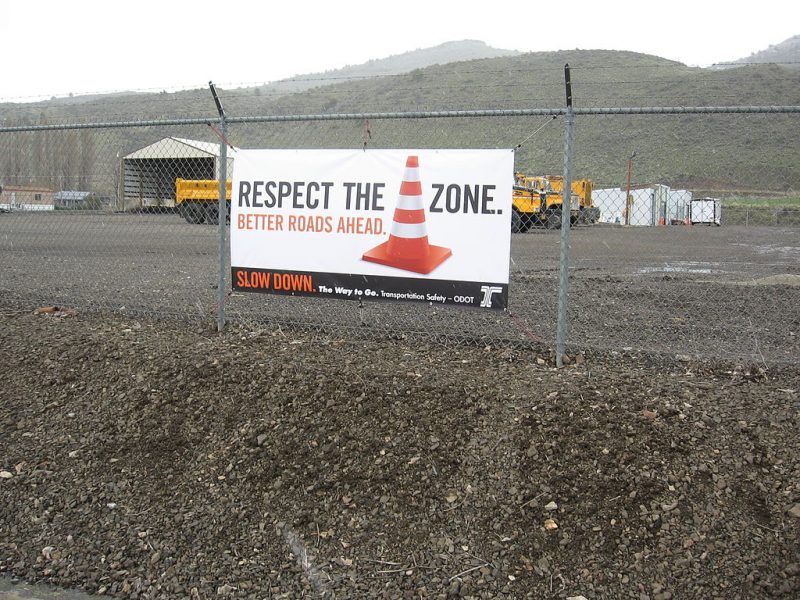If you have ever driven on Utah’s I-15, then you have most likely seen the “Road Work Ahead” signs lining the sides. These signs mark the Utah Department of Transportation’s (UDOT) efforts to improve Utah’s roads and infrastructure. Fortunately, UDOT has provided Utah drivers with some great roads and the amount of construction on I-15 has decreased over the last year. However, because there will always be “road work ahead,” this article can provide you with some information and advice on how to stay safe as you drive through construction zones.
Table of Contents
Driving Different in a Construction Zone
A construction zone, or work zone, is an area where roadwork is currently taking place or ongoing. Usually this roadwork results in detours, lane closures, changes in traffic patterns, and heavy machinery and equipment. Unfortunately, these changes often cause large delays, traffic bottlenecks, and a lot of unhappy drivers. This means that work zones require an extra amount of attention from the drivers so that the work crews and the other drivers on the road can stay safe.
In an effort to make construction zones safer, the Department of Transportation has provided the following information and advice:
According to the National Safety Council, over 100 road construction workers are killed in
construction zones each year. Nearly half of these workers are killed as a result of being struck by motor vehicles. The number of construction zone injuries and fatalities are predicted to climb even higher. Increased funding for road construction during recent years has led to a significant increase in the number of highway construction projects around the country. Increased speed limits, impatient drivers, and widespread traffic congestion have led to an overall increase in work zone injuries and fatalities.
While Utah is not on the list of the top ten states with motorist fatalities in work zones, there are always steps that we can take to make our roadways and work zones safer.
Safety Tips We Can All Use
- Obey all work zone traffic signalers
If there is a change in a traffic pattern, there will often be several workers with signs or flags that are helping to redirect traffic. Listen to them. Drive slowly and follow any instructions that they may give you.
- Don’t make your own shortcuts
Follow the barriers, barrels, or cones that are directing traffic. You may be in a hurry, but it is illegal to cut around or through these barrels in an attempt to get around traffic.
- Don’t Speed
Speed limits are often lower in construction zones, and just because you don’t see any workers or risks, doesn’t mean that the speed limit posted is a suggestion. Speeding in work zones causes accidents and fatalities. Not only are you unfamiliar with possible traffic pattern changes, but sometimes there are obstacles, turns, or detours that require lower speeds to navigate. Also, speeding increases the likelihood that you will be unable to stop in time if traffic in front of you stops or changes lanes unexpectedly.
- Merge Early
If you know that you will have to merge due to a lane closure, merge early so that you aren’t caught in a bad position with a desperate need to merge. This will also help you to move away from where workers may be standing.
- Expect Delays, Plan to Leave Early, and Avoid construction zones when possible.
If you know that construction is occurring, it is your responsibility to leave early enough that you can still make it to work on time without the need to speed or become stressed. If possible, change your daily routes so that you avoid construction zones.
Some Take-Aways
All of us at Good Guys Injury Law want you to be patient, drive slow, and drive safe. There is no need to ignore construction zone driving laws and increase the risk of injury to yourself and everyone around you. However, if you have been injured in a construction zone due to someone else’s negligence, please contact us and let us help you through your time of recovery.
Photo “Road work ahead” copyright to Andrew Hayward
| Oregon Department of Transportation |

